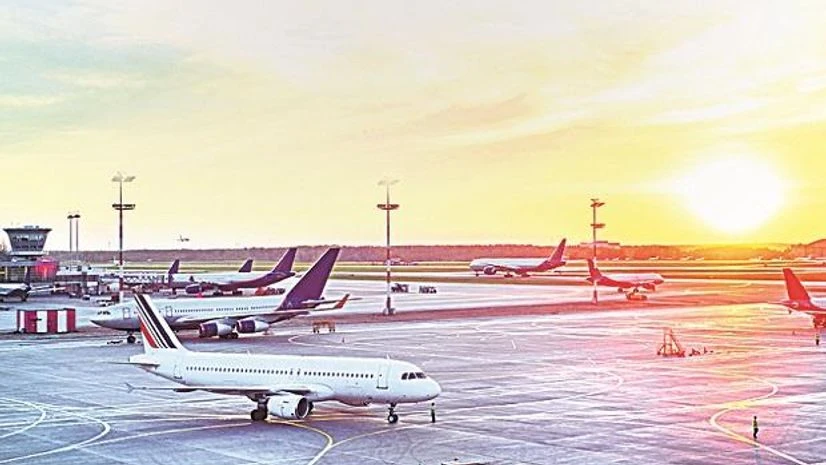The civil aviation ministry on Wednesday said air traffic situation has improved and delays in flight arrivals have been reduced at the Mumbai airport, nearly two months after directions, including a reduction in flights, were issued to tackle congestion at the airport.
The Chhatrapati Shivaji Maharaj International Airport (CSMIA) in the city is one of the country's busiest airports.
Giving a comparison of the air traffic trends based on flight arrivals between the time periods November 11-December 10, 2023, and February 16-24, 2024, the ministry said its initiatives are yielding results and that the situation is also being closely monitored.
During the February 16-24 period, the ministry said there were 4,337 arrivals at the airport, and out of them, there were no delays of more than one hour while 178 planes were delayed for 30-60 minutes.
As many as 570 aircraft came before schedule, 2,469 planes were delayed for 0-15 minutes, and 1,120 aircraft for 15-30 minutes, as per the data.
Meanwhile, there were 14,476 arrivals during the November 11-December 10, 2023 period. Out of them, the data showed that 1,641 aircraft were delayed for more than an hour, 2,141 planes for 30-60 minutes, 2,083 aircraft for 15-30 minutes, and 3,632 planes for 0-15 minutes.
A total of 4,979 aircraft arrived before schedule.
More From This Section
"Aircraft operating earlier than the approved slot (marked as before schedule in the data) lead to congestion and delay for other aircraft adhering to the schedule, which in turn will have a cascading effect on the other schedule movements. These movements were also targeted for improvements and airlines asked to adhere to the allotted slots," the statement said.
The airport has two intersecting runways which cannot be operated simultaneously. So, there is only single runway operations with a peak hour declared capacity of 46 aircraft movement -- arrival and departure -- per hour during High Intensity Runway Operations (HIRO).
The hourly aircraft movement capacity is 44 during non-HIRO period.
To reduce congestion, the ministry, on January 2, directed Mumbai airport operator MIAL and Airports Authority of India (AAI) to restrict non-scheduled flight operations for certain time periods.
Later, on February 15, the ministry directed reducing aircraft movements to 44 from 46 per hour during HIRO period, and to 42 from 44 during non-HIRO period.
The ministry said MIAL (Mumbai International Airport Ltd) in coordination with airlines has implemented the directions effective since February 20.
"All the domestic airline operators were also advised to strictly adhere to the slots allocated by MIAL to avoid air congestion," it added.
Following the directions, airlines have also reduced the number of flights operated to and from the Mumbai airport.
An analysis by AAI concluded that excessive slot allocation and poor slot adherence as major contributors to the traffic congestion at the airport, following which the ministry had issued the directions, including restriction of flights.
(Only the headline and picture of this report may have been reworked by the Business Standard staff; the rest of the content is auto-generated from a syndicated feed.)

)
